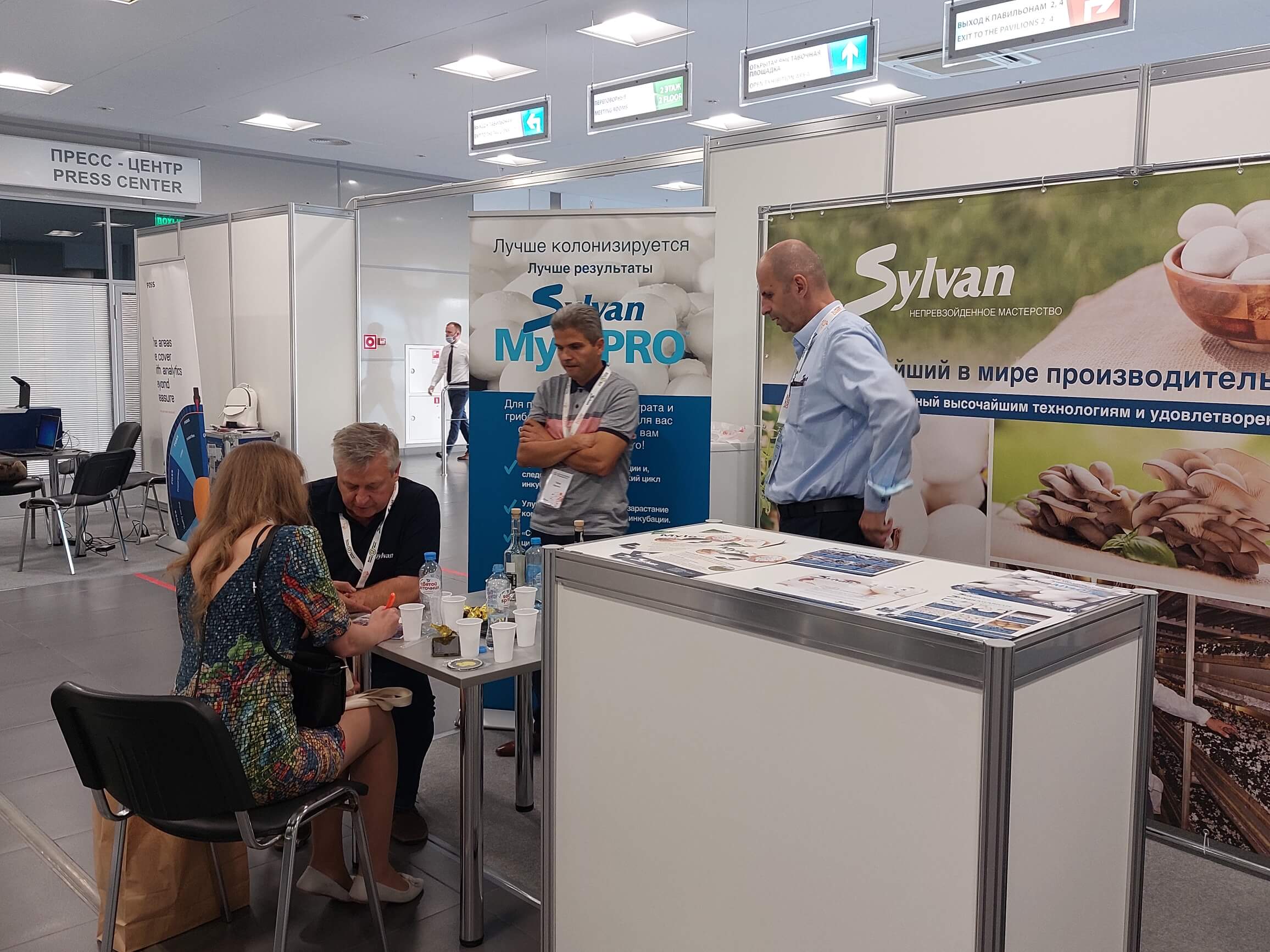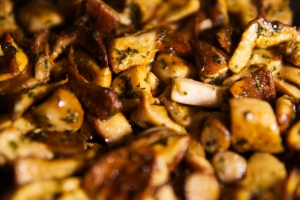
Mushroom Matter
Welcome on our platform. Why MUSHROOM MATTER? Because mushrooms play an important role in our lives as well in business. Our goal is to bring the world the very latest mushroom news with the upmost care to support the positioning of our beloved Mushroom.
Do you wonder where your clothes come from? The material they're made of and how they are produced? Most of us don't, but if we did, we might get a bit uneasy. Now, research is helping the fashion industry take the lead in embracing the circular economy.
If you take an inventory of your closet, chances are you’ll have several garments made at least partly of polyester and nylon. These two low-cost textiles are staples of fast-fashion and currently make up about 60% of clothing and 70% of household textiles.
Polyester and nylon are synthetic fossil fuel-based fibres, meaning they are derived from oil and natural gas. The production of these fibres, their dominant position in the fashion industry, and the fact that they are not biodegradable, means that they have a huge impact on our environment. They also contain harmful microplastics that make their way into every conceivable corner of our land, oceans and waterways.
As a natural fibre, cotton is more easily recycled and requires fewer fossil fuels for its production compared to nylon, for example. However, the cotton industry demands mass land areas for cultivation; worldwide, cotton crops are sprayed with the most chemicals; and, finally, growing cotton requires vast amounts of water.
Where does this leave us? Please read the full article here.
Source: Horizon, the EU Research and Innovation magazine
Quite a while ago Walkro organized a study trip to France and asked EuroMycel to help in this. Unfortunately due to the Covid restrictions the trip had to be delayed until further notice. Then finally the journey took off on September 22nd!
The study trip lasted from September 22nd to September 25th and the program was fully packed with interesting company visits, presentations and amongst learning from each other, a lot of pleasure together. Walkro, the initiator of this study trip, gathered a number of sponsors to get the program well organized.
Sponsors were: Christiaens Group, MC Substradd, Legro, Gicom, Sylvan and Walkro.
On Wednesday September 22nd the group that consisted of Dutch growers, sponsors and organizers, travelled to the Bonduelle facilities in Estrees-Mons by bus. They received a tour in the fields of the Bonduelle yellow beans and visited their factory.
On Thursday morning a visit to the Bonduelle Compost & Yield in La Tourte was scheduled. This was quite interesting especially for Walkro, because here they saw how colleagues work with the same product.
In the afternoon the study group was invited by EuroMycel on their premises. The tour facilitator was Frédéric Mathieu, operational director EuroMycel, and Yves & Rémy of the lab, they are very important for the Operational team. Also Jeroen Dunant, our sales manager, who is our eyes and ears in the field and helps us expand with new customers and in new countries. The tour was received with a lot of enthusiasm! The group was pleasantly surprised and impressed by Euromycel's way of working, given the fact that they are a relatively new player in the industry. Also sharing knowledge amongst colleagues who work with the same products, was well respected.
 Photo to the right:
Photo to the right:
From left to right below:
Frederic Mathieu, Jeroen Dunant, Eddy Alkemade
From left to right above:
Yves Moriamez, Evert Jan Mink, Remy Maufrand
EuroMycel took the whole group on an eventful evening program, which took place in the Caves Angelliaume. Cave Painctes in Chinon. They were welcomed by gentlemen holding the title “Confrérie des Entonneurs Rabalaisiens”. In English “Brotherhood of Rabalaisien Entonneurs”.
Dinner was accompanied by a wine arrangement and theatre performance. There was also a surprise for several people who got acknowledged for some special activities in the Mushroom Industry.

Interesting cultural and historical fact to mention is that the location of EuroMycel, L`Ile Bouchard in the Loire region, is well known for the combination of wine and mushrooms. Hence the set-up of the evening program. The wine was produced on the land and the mushrooms in the caves, the name Champignon de Paris stems from this fact.
On Friday 24th, the group left for Saumur and Paris to spend some time in the ‘City of light’!
The study group packed their luggage for their journey back home. And not only with what they came with, but also with many new and interesting experiences!

The whole Walkro group at the wine tasting facility
at Caves Angelliaume. Cave Painctes in Chinon”
GROWTIME has been producing the highest quality equipment for mushroom growing farms for years. Recently, they have introduced unique Valor 1000 mushroom scales to their offer, which, among other things, don’t need to be charged for a very long period of time, i.e., one year or up to 1000-1500 hours.
What does no need to charge mean? Among other things, no need to connect to the electricity network, saving the pickers’ time and no potential damage to the chargers or their cables.
However, this is only a fraction of the advantages of these scales:
- standard scales include checkweighing options (useful sound signal support!), summation and quick unit change, which makes them ideal for any mushroom growing farm
- it is worth mentioning their usability: the scales have a very clear interface (bright, easily readable display) and simple operation with two buttons - this guarantees easy and fast work
- scales have compact dimensions and a durable, portable structure (removable stainless pan, housing made of ABS material), and its entirety can be very easily and quickly cleaned
- other important features are quick response time, easy leveling of the scale and accuracy of the indications thanks to high internal resolution.
Moreover, the scales are covered by a 2-year warranty period (exclusions for mechanical damage)!
Find out more about the new mushroom farm scales here.
PS. The manufacturer's offer also includes other scales with an ultra-high degree of protection IP68, which makes them almost completely waterproof (valid for Valor 2000 and Valor 4000 models).



Fantastic Fungi
In one week time the Fantastic Fungi Global Summit will take place. A Fungi Community Summit that Feeds you, Heals you, Reveals nature’s mysteries, Helps Save the planet & Unlocks the Power of MUSHROOMS!
40 leading experts will take you in the world of mushrooms, such as mycology, eduction, innovation and health. One of the speakers is Architect & Biodesigner Bob Hendrikx who shares the how and why of the world's first living mycelium-based coffin.
Interested in what Bob and all the others have to say more? Then you should certainly register for the event here!
Picking and calibration
Generally picking is considered by many as a low education job. But on the other hand, we rely on our picking force to deliver a good quality mushroom, meeting the customer demands. No bruised mushrooms, no nail or knife damage, right stem length, straight cut stem, no weak mushrooms in the punnet and for all, the right size. And that is where many things go wrong. It is fairly easy to learn the pickers the right way of picking. Twist and do not pull. Do not take to many mushrooms in one hand so they do not get damaged and put them caps up into the punnet. But getting the calibration right is a constant struggle. Pickers tend to have the habit to pick too small and this will cost you money. They simply pick the mushrooms that were meant to be picked tomorrow. An extra thing to that is that pickers lose the bonus while working really hard.
For the right calibration there are many tools like fruit grading rings, grading cards and other different tools. But the easiest tool they have in their hands: the knife.
The knife most used in mushroom growing is the curved knife and the length of the blade is exactly 60 mm. The calibration most wanted on many farms is 55 to 60 mm. Generally, this size is picked first before thinning out. And this is just the size of mushroom that is as wide as the length of their knife. They just have to keep the knife just above the mushrooms to judge the size. This way the mushrooms can be calibrated before they are picked and they will not be damaged by any other form of grading tools. The rings only let mushrooms through which are small enough. The bigger mushrooms get stuck and will be damaged. But the mushrooms that go through easily are too small and that is the calibration the picker will harvest. By using the knife not only there will be no damage but it is also faster.
If a smaller calibration is harvested like a 40 mm mushroom, a line can be made on the blade with a marking pen. Especially new pickers will be very fast in learning this trick. By banning the calibration rings also, the hygiene on the farm is served. Because these rings are hard to clean and experience learns that they are always dirty and are taken from room to room.
Give it a try and your harvesting staff will be happy.
It will be more mushroms, more competition and more activity.
Such few words can summarize the discussions at the Russian Mushroom Days 2021. About 160 participants from 9 countries gathered at September 14-15 in Krasnodar EXPOGRAD SOUTH for 26th Russian Mushroom Days.
General Sponsor- Sylvan
Platinum Sponsor – Master Champ
Gold Sponsor – Agro-Project
Silver Sponsor – Christiaens Group

Mr. Aleksandr Khrenov, General Director of Russian Mushroom School, Mr. Peter Zavgorodniy, the biggest exotic mushrooms producer in the south of Russia and Mr.Andrey Zhuravel, Head of Plant and Mushroom Department at Kranodar Area Ministry of Agricultural have opened the Russian Mushroom Days 2021. They mentioned that Russian Mushroom Industry grew very fast last 3 year and now Russia is the third mushroom producer in Europe, after Poland and Netherlands. In 2021 about 120.000 tons of mushrooms will be grown in Russia. There are big modern mushroom farms built in the country. Russia has a wide diversity of raw materials for mushroom industry which could be used for different types of mushroom growing. Today the level of cultivated mushrooms consumption is only 870 gr per head in Russian. There is still a big opportunity for local market developing. Cost of mushroom production led to expand the mushroom product export. Krasnodar area is a leader among Russian regions in mushroom production. 25% of Agaricus,10% of Pleurotus and 60% of exotic mushrooms are grown here.
 EXPO Equipment and materials for mushroom growing and processing
EXPO Equipment and materials for mushroom growing and processing
21 companies were introduced from Russia, Poland, Netherland, Italy, Spain, France and China. First time we have more Russian than foreign companies at the Mushroom EXPO. Compost, spawn, peat, casing soil, packaging, shelves and picking trolley, equipment for Pleurotus and Exotic mushrooms production are produced in Russia now and supplied to Russian and foreign growers.
International Conference about Mushroom Business development in Russia
This was organized in an off-line and on-line format. Because of COVID limitations 4 out of 23 speakers were not able to come to Russia and did their presentations on-line. Main Conference topic was an actual situation and prospects of the Russian local mushroom market.
Three times production expansion led to a price drop of more than 20%. At the same time raw materials, packing materials and labour cost seriously increased. How to keep a profit level of mushroom business and continuy developing? Speakers offered a few options: demand stimulating through mushroom promotions, expand the the product range, standardization of mushroom grades, processing and addition value product creating.
Innovations from Russian Researchers
Scientists from Moscow State University, Kuban State Agro University and Government Scientist and Research Center of Virology and Biotech “Vector” offered ideas to growers about spend compost processing, spawn production and medicinal mushrooms products.
Agaricus Mushrooms Growing and Pleurotus and Exotic Mushrooms Growing
Main Russian and foreign experts discussed important questions determining production stability, high yield and quality. Conference was held on-line with a conference application.
Agaricus Section Sponsor - GTL Europe
Pleurotus and Exotic Mushrooms Section Sponsor - Теchnik
It was the fisrt time at Russian Mushroom Days that the “MushroomBBQ-Show” was arranged. Three great Chefs from Krasnodar restaurants Ludmila Dikovskaya, Pavel Proskurin и and Vladimir Shabalin showed a master-class about mushroom cooking on a grill Weber. Carpaccio from Agaricus mushrooms, Enoki in the bacon, Burger with Portabelo, Sote from Beach mushrooms and Eringy were easy to cook and fantastically tasty. After the Chefs Show, mushroom growers’ teams started to fight for Prize -Professional Weber grill.
Voronezh Mushrooms, South Mushroom Company, Tula Mushroom Company, Теchnik and “Mushroom School Friends” tried to surprise the Chefs with mushroom dishes cooked on the grill. All 3 Chefs decide that the best dishes were thePleurotus sausages from “Technik” team. Weber grill was provided by Original – grill Shop. Agaricus Mushrooms and Portobelo were provided by Russian Mushrooms farms. Pleurotus Mushrooms were provided by the Rozmirskiy Farm. Shiitake, Eringy, Beach Mushrooms and Enoki were provided by Eat Mushrooms company.
Russian Mushroom Days confirmed a serious plan of Russian mushroom companies to solve the todays' low-price period and continue to expand business. It will mean that more mushrooms will be produced in Russia, competition will be strong and more powerful with creativity in order to grow their part in the msuhroom industry.

Mushroom 2021 ISMS e-Congress
The ISMS organized a live online congress in September, which came to a close on Friday the 17th. 288 delegates, authors and presenters took part in the event.
Big news was provided by Rachel Roberts, President of the American Mushroom Institute (AMI). She announced that the 2024 ISMS Congress will be held in conjunction with the 2024 North American Mushroom Conference.
If you weren't able to attend the unique e-congress in September, you are still able to download interesting information like videos and live stage recordings.
You can find the information and the download material here!
Pitfalls preparing mushrooms
There are plenty of ways to prepare or use mushrooms in a delicious meal. But one of the tastiest ways is to brown the mushrooms. But how do you get them so nice and golden brown? With these 5 tips, what you should definitely not do, it will certainly work the next time!
Do not wash
You should never clean mushrooms with water. This is because they are porous and absorb moisture like a sponge. This will make them mushy and lose their flavor. So clean the mushrooms with a brush or with a piece of kitchen paper.
Not too much butter or oil
If you are going to fry mushrooms, let the pan get very hot. This way the least amount of water will run out of the mushrooms and they will not become dry. Also do not use too much butter or oil because they will absorb it completely and then you will not get nicely browned mushrooms.
Not too much in the pan
Do not fry all the mushrooms at once, but give the mushrooms enough space in the pan. This way the moisture released from the mushrooms has plenty of room to evaporate and you prevent the mushrooms from stewing instead of frying.
Do not add salt too quickly
Salt draws moisture from the mushrooms. So let them fry until golden brown before adding salt. It is also better to wait until the end with adding other spices such as pepper or parsley.
Do not stir
Resist the urge to stir your pan all the time. The mushrooms need enough time to caramelize. Because then do they get that golden brown edge? Only then is it time to start stirring so that the other side can brown nicely.
Good luck and enjoy your mushrooms!




























